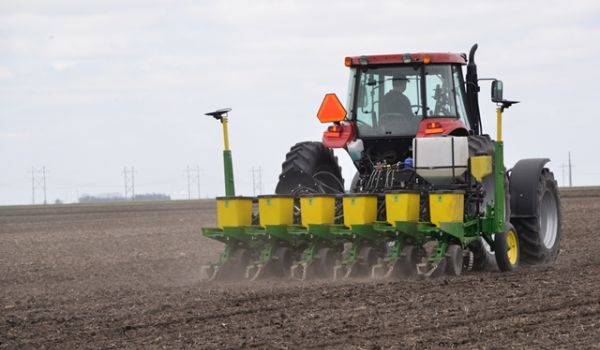Adam’s Top 5 Yield Drivers

“Raise more bushels to overcome low prices.” I’ve heard that phrase a lot over the winter, and may have even uttered those words myself. So, how do we increase our yield potential this year?
It’s tempting to cut inputs to lower costs, but that will compromise yield potential. Here are my top five yield drivers to focus on this spring:
- Push up the planting date: With the genetics and seed treatments available today, seed has better stress tolerance and can be pushed a bit by planting earlier. You need to monitor soil temperatures and conditions, but research has shown a yield loss of almost 1bu/day if you wait to plant corn. Consider the forecast almost as much as soil temperature. But if soil conditions and the forecast are good—particularly for the first 48 hours after planting, which are most critical for stand establishment—then let the planters roll. April 25 is my average target planting date.
- Increase the population: Lean toward putting too much seed in the ground, rather than not enough. Corn yields in our Ole & Sven trials average five bushels per thousand seeds. So, adding 4,000 more ears/acre should yield 20 more bushels, right? Well that’s in a perfect world. Conditions are never perfect, but putting extra seeds in the ground will get you at least some of that extra 20 bushels. I recommend planting “hot streaks” in your field, bumping the population up by 4,000 seeds. Place the seeds where you’ll get the best return.
- Optimize planting depth: Ideal planting depth is 1½”–2” for corn, and 1–2” for soybeans. Last year farmers who tried to chase moisture by planting deeper got poor results. The Ole & Sven trials have shown an 11 bushel decrease when the seed is planted at 3”. Planting too shallow (under ¾”) can cost you the whole field if emergence is poor or if lodging occurs later in the season. If emergence is poor for corn planted at recommended depths, there are bigger issues at play that are out of our control.
- Slow down the planter: Seed tubes on our planters are designed for speeds up to 5mph. Going faster than that increases the chance of the seed skipping down the seed trench, leading to skips and doubles, and ultimately yield loss. Keep speeds under 5mph unless you’re using a new high-speed planter.
- Hybrid/variety placement: You’ve already selected hybrids and varieties, but placing them in the wrong field can be very costly. Putting a defensive variety on good ground, or an offensive variety in difficult ground, will take away top end yields. Most of the hybrids we plant today were bred specifically for the variable soils in the Upper Midwest.
I didn’t include fertility on this list because it is more than a springtime-only event. Plant nutrition is equally affected by rate and timing. Fertility lost before uptake is just wasted money.
When growers experience lower than expected yields, often it’s because of one of the items in this list. Produce a bigger crop this year by setting up your fields for maximum yield potential.



